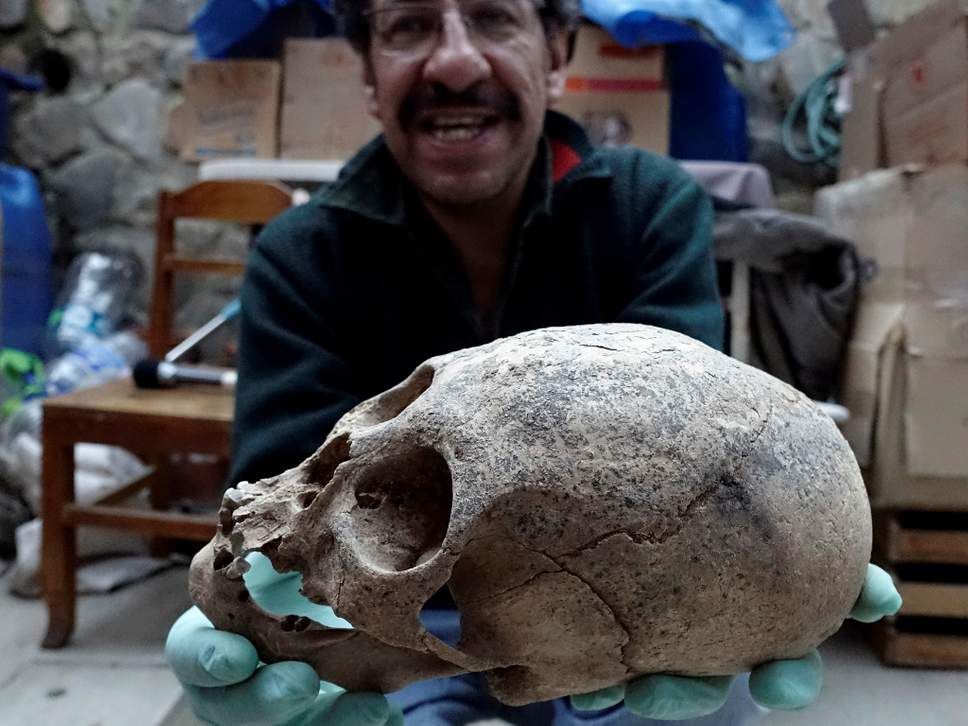Bolivian Tombs Reveal Human Remains and Inca Artefacts From 500 Years Ago
by Chiara Giordano November 17, 2018 (independent.co.uk)
• Archaeologists have discovered over 100 more human remains near Viacha, Bolivia of an Inca civilization, some of which had the now-famous elongated heads. The Peruvian ‘Pacajes’ empire was developed around the beginning of the 13th century, and was conquered and destroyed by Spanish conquistadors by the end of the 15th century.
• Jedu Sagarnaga, the archaeology professor at Universidad Mayor de San Andres who is leading the investigation, speculates that the elongated skulls that may have been stretched to differentiate the social rank of individuals.
• Julio Condori, an archaeologist with the Archaeological and Anthropological Research Centre in Tiwanacu, in Bolivia, said: “This finding… shows that not only was there an influence from the Incas, but from other people as well.”
• The remains were taken to an archaeological center for further study and will eventually be returned to a museum in Viacha.
• [Editor’s Note] Notwithstanding the irregularities found by Peruvian scientists (see Giorgio Piacenza’s recent article “A Refutation of the Alleged Three Finger Nazca Humanoid ‘Mummies’” and “Some PROS and CONS About Some of the Nazca-Palpa 3-Fingered Specimens“) that questions the authenticity of the ‘Nazca mummies’ touted by GaiaTV, it is undisputed that ancient elongated skulls have been recovered throughout the world. The elongated skull contained a larger cranial cavity for a larger brain. So while indigenous people may have used ‘head binding’ on their infants to create an elongated “look” indicating their family’s superior social class, who were these “other people” with the larger brains whom they were trying to emulate? Perhaps they were non-human demigods who did have actual elongated skulls and brains to match – i.e.: Anunnaki?
Tombs containing human remains and Inca artefacts from more than 500 years ago have been discovered in Bolivia.
Archaeologists say the remains, which were found at a quarry about 12 miles from La Paz, belonged to more than 100 people from an indigenous civilisation.
They were buried with more than 30 vessels used by the Incas for performing death rites.
“The vessels are whole and are Incan,” said Jedu Sagarnaga, an archaeology professor at Universidad Mayor de San Andres, who led the investigation.
The site near the modern-day town of Viacha also contained elongated skulls that may have been stretched to differentiate the social rank of individuals, he said.
The cemetery carved into limestone appears to have been built by the Pacajes people, whose cities were conquered by the Incas towards the end of the 15th century.
The Pacajes formed part of the Aymara kingdom and developed around the year 1200 after the decline of the Tiwanacu people in the Andean highlands.
Julio Condori, an archaeologist who runs the Archaeological and Anthropological Research Centre in Tiwanacu and was not involved in the excavation, said: “This finding reaffirms our identity and culture and shows that not only was there an influence from the Incas, but from other people as well.”
FAIR USE NOTICE: This page contains copyrighted material the use of which has not been specifically authorized by the copyright owner. ExoNews.org distributes this material for the purpose of news reporting, educational research, comment and criticism, constituting Fair Use under 17 U.S.C § 107. Please contact the Editor at ExoNews with any copyright issue.
